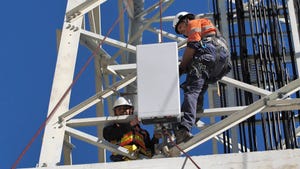ZigBee, the Wireless Dormouse
Philips & friends are cooking up a sleepy, ultra-low-power wireless technology for your home -- or factory
August 21, 2002

What's wireless, sleeps a lot, and may be coming to a home near you sometime in 2003?
Nope, it's not an Unstrung editor. It's Philips Electronics NV's extra-low-power wireless data technology, the rather curiously named ZigBee specification.
ZigBee-enabled devices will be able to transfer data at a few hundred bits per second at a range of around 15 meters to 20 meters, according to Venkat Bhal, marketing manager for Philips' ZigBee unit. Like Bluetooth and 802.11b, the technology uses a 2.4GHz radio.
So, why bother? wonders Unstrung (aloud, as it turns out). After all, 802.11b wireless LAN networks can transfer data at much higher speeds and Bluetooth is a fairly low-power standard. Haven't we already got the tools we need for wireless data applications?
Not exactly, according to Bhal.
"Bluetooth is based around cellphones," he says. This means Bluetooth designers can work with the assumption that the host device is going to be regularly given a shot of juice. This is also true for the power-hungry, laptop-centric 802.11 technology. Whereas with ZigBee, the assumption is that the device will run on standard, non-rechargeable batteries that might not be changed for months or even years.
Bhal says such a specification could be used for remote control and home networking applications, as well as industrial and building automation.
The ZigBee technology is a very low-power spec because it doesn't actually do much for large periods of time. "We're asleep almost all of the time," says Bhal. When Bluetooth devices aren't transferring data, they're constantly searching for other Bluetooth devices; when ZigBee is done sending data, it simply switches off.
This should also help with interference problems, since ZigBee devices won't often be in operation when other devices are pumping data over the 2.4GHz band.
The Institute of Electrical and Electronics Engineers Inc. (IEEE) is working on standardizing the physical layer and media access controller (MAC) for ZigBee [ed note: the old fusspots are calling the spec 802.15.4]. Meanwhile, the ZigBee Alliance is working on the software stack and upper layers. Bhal expects to start sampling chipsets in the middle of next year.
There are over 25 companies in the ZigBee Alliance, and Bhal says that two more major members will be announced soon.
— Dan Jones, Senior Editor, Unstrung
http://www.unstrung.com
You May Also Like










